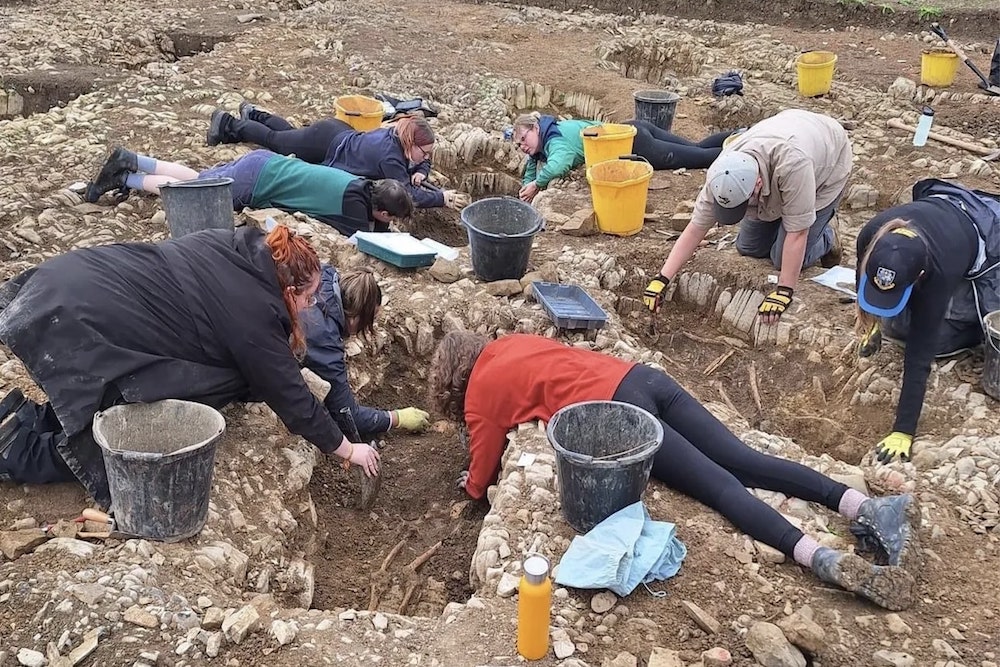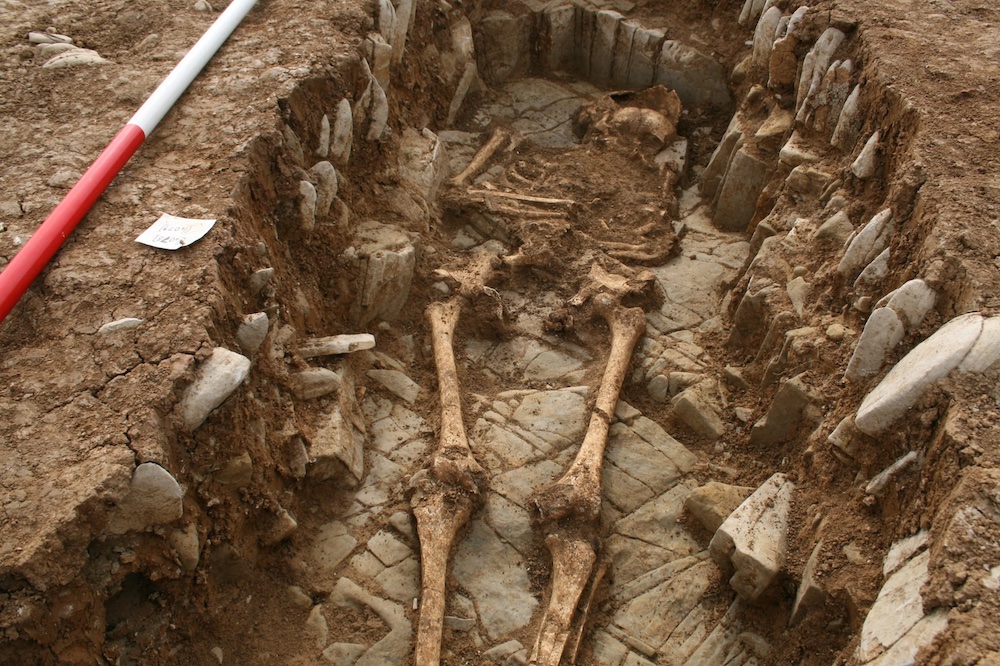What incredible discovery tells us about life in Wales 1,500 years ago

Graham Loveluck-Edwards
In the last month, several significant archaeological finds in the Vale of Glamorgan have made headline news.
These amazing discoveries centre around an incredible burial site dating to the 5th and 6th century in the grounds of Fonmon Castle. To put that into some wider historical context, this is the point in history when King Arthur would have been around, and when the people of Wales would have just started to turn from pagans to Christians. And the Vale of Glamorgan played a very important role at that time, in that transformation.
When this burial site would have been in use, nearby Llancarfan Abbey (founded by the early Christian missionary; St Cadoc – who Cadoxton is named after) would have been at its height of influence. It is believed that there is a link between the ancient abbey and this burial site and this also tallies with other archaeological finds in the general area of the parish boundaries of Llancarfan. Much of the material which has been uncovered in Fonmon however is absolutely unique and tells us a story never before told. And that is why these finds have been headline news.
I spoke to the project leader; Dr Andy Seaman of Cardiff University and asked him what it was he had found that was so significant.
“Organic and fragile archaeology such as human remains and animal bones don’t tend to survive that well in Wales as the soil is acidic in most places. But here in the Vale of Glamorgan we have this wonderful limestone geology which has kept these burials and the other materials associated with this site in remarkably good condition. That combined with recent advances in technology have given us a unique opportunity to tell the story of who these people were, where they might have come from and how they lived.”
The recent advances in technology Dr Seaman has at his disposal are mind blowing. Not only can these remains be accurately dated and aged, but DNA can now be captured and used to detect sibling groups and ethnicity. All of which is ground-breaking. Had these remains been found just five years ago, this technology would not have existed.

Other material found on the site indicate that the people who were using the site were part of a very sophisticated society. These were people of high status. The sort of evidence we have to support this, include glass fragments that date to the 6th C. This glass itself would have been fabricated in Egypt and then fashioned into a banqueting goblet in southern France. Before being shipped to these people in Wales.
This will come as a surprise to many people as the period of history these materials date from is an episode of British history known as the Dark Ages. For centuries we have all been taught in history lessons at school that during this period the ancient Britons effectively rewound the clock and abandoned civilisation. Like some post-apocalyptic scene from Mad Max.
The revered historian Sir Frank Stenton wrote “between the end of Roman government in Britain and the emergence of the earlier English kingdoms, there stretches a long period of which history cannot be written”. Well, that history is finally getting written. These finds and the work of Dr Seaman’s team back at the labs in Cardiff University to interpret what they tell us are finally filling in the gaps. A picture is emerging that the Dark Ages were nothing like as dark as we had been led to believe. Here in the Vale of Glamorgan at the very least. And the really exciting thing is that so far only two points of interest on the site have been excavated. There are still another five which will be explored later this year. So, watch this space. There are plenty more chapters to this story to be written.
Graham Loveluck-Edwards is a historian and writer. You can listen to his radio show History On Your Doorstep on Bro Radio. Find out more HERE
Support our Nation today
For the price of a cup of coffee a month you can help us create an independent, not-for-profit, national news service for the people of Wales, by the people of Wales.







The Dark Ages were so-called not because the people were believed to be primitive, but that there was paucity of written records—hence “Dark”. The term was not pejorative.
Actually the first organised Christian church was established in what is now Gwent back in 37AD. See the Britain’s Hidden History page on FB.
It is good to see that in the last decade Cardiff University Archeology Dept is at last investigating the mass of local sites, the story of this area from the Silures through the Arthurian Period and early Christianity is amazing and needs to be more widely understood in Wales. This site in Fonmon is fascinating.